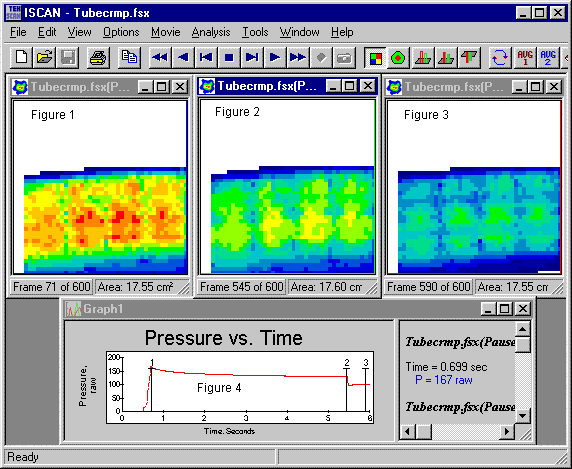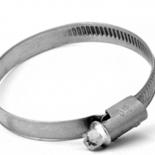Hose Crimp & Clamp Testing
Test the quality of a hose clamp or crimping operation during the assembly process.
Pressure Measurement to Test Quality of Hose Clamp or Crimping During Assembly
Hose failures or leaks often occur at the “crimped” or clamped end of a hose, where the metal tube is sealed against the hose. Insufficient pressure in a small region of the “crimp” creates a weakness in the seal and provides an opportunity for a leak to develop. The thin profile of the Tekscan sensor, and the vibrant images displayed by the I-Scan™ pressure mapping software, enable hose manufacturers to see what is happening in the seal during and after the crimping or clamping process, without interfering with the process. This data can be used to evaluate the seal quality and ultimately improve the product and the process.This test was conducted to capture the dynamic pressure distribution between a rubber hose and a metal tube during and after the crimping operation. A paper-thin (0.1 mm), 2000 element sensing array was placed between the rubber hose and metallic connector piece, and the “crimping” process was initiated. Figures 1 – 3 correspond to a circumferential measurement of the normal pressure distribution applied to the hose during crimping.
The sequence of two-dimensional images shown in Figures 1-3 describes the pressure distribution between the rubber hose and crimped metal end connector. Figure 1 shows the initial, or peak, clamping pressure distribution (at time = 0.7 sec.) applied to the hose and metal tube by the crimping machine. Figure 2 shows the pressure (at time = 5.5 sec.) just before the machine releases the hose and connector. Figure 3 shows the pressure distribution (at time = 6.0 sec.) just after the crimping fixture releases the crimped hose. The relaxation of the seal and the development of possible leak paths are evident, and can be seen as the blue channels running from top to bottom in Figure 3. The graph (Figure 4) represents the total pressure versus time history of the event. Notice that the residual pressure in the “crimp” (after being released) is significantly less than the final crimping pressure while in the tool. Since the sensor is located in the seal, this hose could be subjected to various conditions, and additional measurements could be taken to examine the impact on the quality of the seal. Learn more about I-Scan pressure mapping system for product design and testing.

See how Pressure Mapping Technology can be a useful tool to help validate a seal on a product or device:
